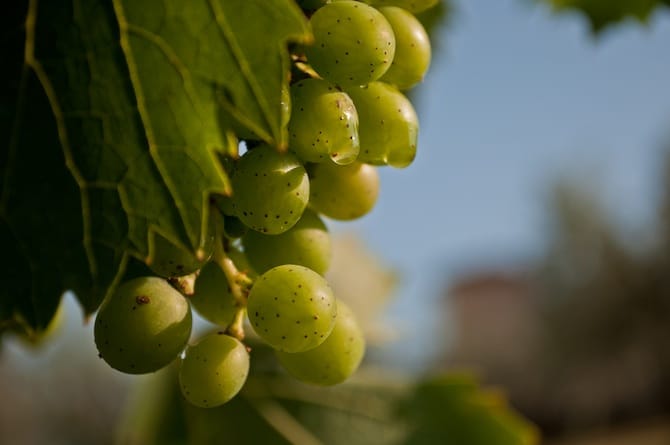
“Do you know what Italians do when they eat? They drink wine. Do you know what Italians do when they drink wine? They eat. It goes hand in hand.”
We’re into the Italy portion of my sommelier certification course with the Sommelier Society of America. Like last the previous Germany wine class and Austria wine classes, Mr. Rudi Eilers is the instructor. According to Mr. Eilers, in the 1970s and before, fine dining and wine meant French; however, for newer generations it’s Italian. Vineyards in Italy grow like grass does in America, and in almost every destination in the country one can grow wine grapes. In fact, according to Karen MacNeil of “The Wine Bible,” Italy is home to 900,000+ registered vineyards and 20 wine regions. Interestingly, while some winemakers are intent on crafting traditional Old World-style wines, others believe the more worldly palate needs more worldly, innovative wines incorporating modern machinery and techniques. Therefore, in Italy one can find find Old World and New World-style wines.
Of these 20 regions, there are a few that are more important than others. These are the ones we will focus on for this article. But first, let’s look at how Italy classifies their wine.

The Classification
The classification system for Italy is similar to the AOC classification system of France’s wine regions. That being said, Italy’s system has many flaws.
- Vino de Tavola: The lowest status of Italian wines. Typical for everyday quaffing wines.
- Indicazione Geografica Tipica (IGT): Equivalent to Germany’s Qualitatswein in Germany of Vin de Pays in France, IGT wines must meet certain qualifications; however, they’re much less strict than DOC and DOCG wines.
- Denominazione di Origine Controllata (DOC): The Italian version of France’s AOC classification, DOC has rules governing what grapes can be used, grape yields per hectare, minimum alcohol content, vineyard care practices, winemaking practices and aging.
- Denominazione di Origine Controllata e Garantita (DOCG): The most prestigious classification of Italian wines. While DOCG governing bodies look at the same things for both DOC and DOCG wines, DOCG is stricter. According to Mr. Eilers, DOCG wines must also have historical importance, international recognition and be contributing substantially to the health of the country (vague much?). That all sounds well and good, but think about this: When DOCG began there were only six wines that made the cut. Fast forward to today, and, there are 73. This isn’t necessarily because 73 wines are that good, but because the Italians realized they could charge more for a DOCG wine, so more were allowed the title (which also makes it less special).
While these classifications aren’t always 100% accurate in terms of dictating a wine’s quality, what they can tell you is what areas of Italy are known for making elite wines.
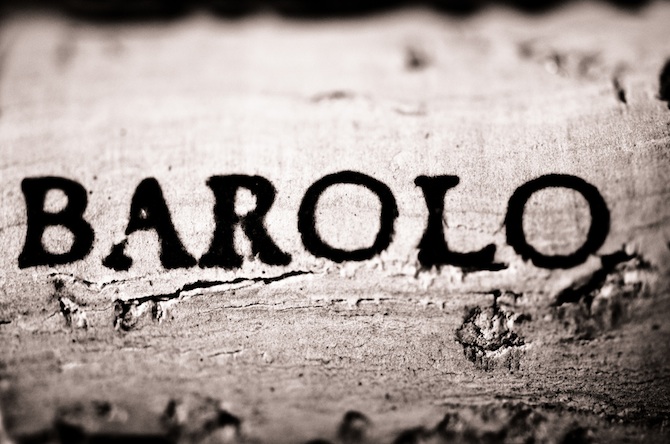
Terms To Know
What’s interesting to note is that many wine terms in the New World are used as marketing ploys, for example, “reserve”; however, in Italy, these words actually have defined meanings. Some important words to know as explained by Mr. Eilers include:
- Superiore: These wines have a higher alcoholic strength due to riper grapes and fuller-bodies wine, as well as higher production standards such as a longer aging time and single vineyard.
- Riserva: While the amount varies by DOC and DOCG, Riserva (Reserve) refers to a minimum length of additional aging time for the wine. For example, a Brunello di Montalcino Riserva must be aged at least five years before being released (compared to two years for non-riserva), while a Barbaresco Riserva requires a minimum of four years of aging (compared to three years for non-riserva).
- Classico: If a wine is “classico” it is from the original geographical part of the DOC/DOCG that made the region famous.
Grapes vs Place
One aspect of Italian wine many find confusing is the fact wines differ in whether they’re named after the place they originated from, like with Barolo, or the grape, like Barbera — or both. While there’s really no way around knowing whether it’s a grape or place without studying, one trick when it’s named after both is to look at the “d’”, which means “from.” For example, if you see Montepulciano d’Abruzzo you know it’s Montepulciano grapes from Abruzzo.

Important Regions
Piedmont
If you’re going to try to comprehend only one Italian wine region, make it Piedmont, which Mr. Eilers calls the “shining star of the north.”
“It’s as if God comes down and touches everything that grows there and it turns to gold,” says Mr. Eilers emphatically. “They have the world’s greatest cherries, delicious hazelnuts and white truffle. You can’t just grow that anywhere.”
Situated at the foot of the Alps, every wine you’ll find in Piedmont is of DOC and DOCG status, so you’re getting very high quality. It’s also from here where the king and queen of Italian wines originate: Barolo and Barbaresco. These wines are made from the nebbiolo grape, which is finicky and difficult to do right. This is another reason these wines are held in such high esteem: Piedmont is possibly the only place in the world truly succeeding at making great nebbiolo wines. Nebbiolo is to Piedmont what Pinot Noir is to Burgundy, as both of these regions focus on taking one single grape varietal and perfecting it.
The Barolo and Barbaresco villages are located near to Alba, famed for its amazing and rare white truffle. These wines are both powerful — sometimes thought to be too powerful by foreigners who aren’t thinking in line with the rich foods of the area — with big tannins, meant to be aged for 10 years or longer. While new technologies have allowed these wines to be drank sooner, the truth is this isn’t the type of wine you’re going to buy and savor that night — unless you want to feel your tongue sticking to the roof of your mouth. Let them age. It’ll be an investment you won’t regret as the astringent tannins soften and lead to more complex wines.
Also remember these wines, while often compared and talked about together, are slightly different. Barolo is thought to be slightly more masculine, with Barbaresco having a bit more elegance. Barolo is also produced in much higher quantities as it spans a larger area, which also leads to less consistency in how the final product comes out.
Those wanting to taste the delicious reds of Piedmont but don’t have the cash to front for one of these can opt for the next best thing: Barbera and Dolcetto. These are easy drinking dinner wines, and much more affordable. Actually, Barbera is the most widely planted grape in Piedmont and is the opposite of the harshly tannic Barbaresco and Barolo wines, a supple wine with high acidity to cut through flavorful food and wet the palate for the next bite. Moreover, the wine offers flavors of chocolate, cherry and, a common red wine flavor in Piedmont, licorice.
Although predominantly a red wine region, Piedmont also has a few white wines of note. First is Gavi, made in and around the village of Gavi. Made from the cortese grape, a great Gavi wine is typically dry, clean, crisp and refreshing with fruit and citrus flavors. There’s also Asti, or Asti Spumante (spumante means foaming), Italy’s most popular sparkling wine. Crafted from Moscato grapes, a high quality Asti is fruity with tastes of peach, apricot and nuts, best served chilled. According to MacNeil, most Astis do not put a vintage date on the label, as this wine should be made, sold and drank with grapes from the previous harvest. There’s also Moscato D’Asti, another light and fruity wine made with moscato grapes. This wine is even lower in alcohol than Asti (a maximum of 5.5% compared to Asti’s 9%), and while slightly fizzy, isn’t foaming. You’ll also find vintages on bottles of Moscato D’ Asti.
Fun fact: Piedmont’s spumantes aren’t always white. In fact, red spumante is crafted from nebbiolo and barbera grapes and is sweet and fruity.
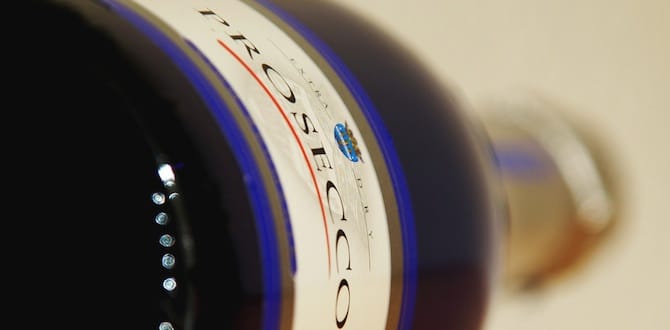
*The Tre Venezie*
The Tre Venezie, or Three Venices, refers to three winemaking regions of Italy: Friuli-Venezia Giulia, Trentino-Alto Adige and Veneto — home to some of Italy’s most famous wines. Here you’ll find all types of high-quality and complex wines: whites, reds, sparkling and even rich dessert wines. The grapes and wines of the Tre Venezie differ depending where you are. First is Friuli-Venezia Giulia, located near the Alps and Adriatic Sea for warm days, cool nights and mild weather that allows for ripe grapes and balanced, pronounced, full-bodied wines. It’s also worth noting this region focuses on purity in winemaking. Instead of using additives, aged wood or modern practices to manipulate the wine they let the grapes and terroir speak for itself, a practice not as common as one may believe, especially with white wines.
Friuli-Venezia Giulia is most well known for its whites made with pinot grigio (pinot gris), pinot bianco (pinot blanc), sauvignon blanc and chardonnay. There are also indigenous grapes like tocai friulano and ribiolla gialla, used to make both single varietal wines and blends. While tocai friulano has a creamy mouthfeel and offers a range of bold flavors, from vanilla to herbs to pepper, ribiolla gialla provides flavors of peach, apple and citrus with floral notes and a good acidity. There’s also the indigenous picolit grape, which has the ability to make delicious dessert wines; however, the grape will often shed its grape-growing flowers without warning, making these wines very rare (and expensive!). About half of their wine production is red, mainly merlot and some cabernet sauvignon and carbernet franc, but also made from native grapes including schippettino and tazzelenghe — both wines with intensity — and refosco, more of zesty, everyday drinking wine.
The next Tre Venezie region to discuss is Trentino-Alto Adige, two land-locked provinces with a similar winemaking philosophy (so much so, they’re combined when speaking about the Tre Venezie). Here you’ll find an array of international and native grape varieties, including chardonnay, muller thurgau, nosiola, traminer, pinot grigio, sauvignon blanc and pinot biano for whites, and cabernet sauvignon, cabernet franc, lambrussco, merlot, marzemino, lagrein, teroldego and schiava (or vernatsch). While there is much one can say about Trentino-Alto Adige, possibly the most important is that it’s a top producer of sparkling wine, especially Giulio Ferrari, who makes classic method sparkling wine similar to Champagne. These spumantes use chardonnay, the area’s most important white, followed by traminer (yes, it’s related to gerwurtztraminer), which produces light-bodied wines that vary in flavor and aroma. For reds, lambrussco is the most widely-planted grape in the Trentino-Alto Adige, which makes light-bodied wines that are both dry and sweet and are also affordable. Like in Bordeaux, merlot, cabernet sauvignon and cabernet franc are important grapes, making deep and powerful red wines.
Lastly in the Tre Venezie region is the Veneto — home to the city of Venice — the most well-known of the three and featuring globally celebrated wines including Amarone, Prosecco and Soave. In this region the grapes you’ll find include chardonnay, garganega, pinot bianco, pinot grigio, prosecco, tocai friulano, trebbiano and vespaiola for whites. For reds, the Veneto grows cabernet sauvignon, corvina, merlot, molinara, negrara and rondinella.
Let’s start with the Veneto’s sweet wines. Here they are typically made using a process called recioto. This is where winemarkers choose the ripest grapes — usually the ones bulging out toward the sun from the rest of the bunch — and dry them to concentrate the sugar. This is how Torcolato is made from vespaiolo grapes. The wine offers a balanced richness with flavors of raisin, vanilla, nutmeg, hazelnuts and cinnamon.
No discussion of the Veneto would be complete without mentioning corvina, the most widely planted indigenous grape and the core ingredient for Amarone, Valpolicella and Bardolino, all important Veneto wines. Amarone, which also has rondinella, molinara and sometimes negrara is the most well-known, a powerful dry earthy wine with flavors of chocolate, ripe fruit and cherry and aromas of leather and animal. Valpolicella is made with the same grapes; however, the major difference between these wines is that while Valpolicella’s grapes are picked at harvest, Amarone’s are plucked later in order to allow for riper grapes. The recioto method is used to dry the grapes, concentrate their sugar and give yeast something to munch on and convert into a high alcohol wine — often 16% — and many are then aged for 5+ extra years for added complexity. That’s not to say Valpolicella isn’t complex. In fact, there are a number of different styles of the wine, including a seductive Recioto della Valpolicella, a recioto-method made sweet red wine that’s not syrupy but rich with dried fig, rip cherry, caramel and dark chocolate.
Bardolino is the complete opposite of these wines: light with a hint of cherry, rose, violet and spice. You’ll find this wine made into a sparkling wine called chiaretto and an autumn novello wine, both served chilled.
For whites, Soave made from the garganega and trebbiano grapes is the most popular, a light and, well, sauve, wine, with notes of pear, almond and white flowers. In order to ensure quality — Soave’s can range from bland to complex — your best bet is to opt for a Soave Classico Superiore, which is aged an extra eight months before being sold and tends to be of a higher caliber. There is also a sweet Soava made using the above-mentioned recioto method.
Prosecco is another important wine to talk about, a specialty of the Veneto. What might be surprising to some people is that Prosecco isn’t just a wine, but a wine grape (the very grape Prosecco is made from, sometimes called glera), although sometimes it’s mixed with a little pinot grigio and pinot bianco. While fizzy like Champagne, it is not made using the same classic method. Instead, Prosecco endures the charmat process, where the wine’s second fermentation takes place in pressurized tanks rather than bottles, as with Champagne. Although delicious on its own, one should also try Processco in the Vento’s signature cocktail, “The Bellini.” If you’ve had this drink anywhere other than the Veneto you probably didn’t have the real thing. According to MacNeil the drink was invented in Harry’s Bar in Venice, and features ice cold Prosecco and fresh pressed white peach juice (not yellow peaches or frozen juice).
*Tuscany*
Tuscany, the land of cherry-forward sangiovese. This is the region’s most dominant grape, and is used in all major Tuscan reds, including Chianti, Brunello di Montalcino and Vino Nobile si Montepulciano. Keep in mind, just because these wines are made from the same grape does not mean they taste the same. In fact, they all taste remarkably different, somewhat because of terroir but also because the grape has many genetic variations.
The second-most important red wine grape in Tuscany is cabernet sauvignon, often blended to make a number of the region’s well-known Super Tuscans. Traditionally the grapes used to make Chianti wines were sangiovese, canaiolo, malvasia and trebbiano, often adding the white grapes into red wines. According to MacNeil, this tended to dilute the wines, and the industry found itself facing possible demise. In order to help the problem, a winemaker named Marchese Mario Incisa della Rochetta created Sassicaia, a wine made without any sangiovese but cabernet sauvignon from Chateau Lafite in Bordeaux and aged in small new French oak barrels — not large old Slovanian oak barrels. From this wine Tignanello, another nontraditional red wine, was born. These wines pushed the envelope, not made in accordance to the current DOC wine laws — and were more powerful and tannic, less supple and elegant. Thus, they were dubbed Super Tuscans. What’s interesting is that while in later years as laws changed some of these wines can fall under Chianti wine status, many choose not to give up their proud Super Tuscan label.
In terms of white wine, Vin Santo, made from the trebbiano and malvasia grapes. To learn more about this mind-blowing wine, with its flavors of honey, almond and stone fruit, check out Learning the Art of Traditional Tuscan Cooking, where I had a personal encounter with Vin Santo. This wine is sweet, a perfect ending to a simple yet delicious peasant-style meal.
While these are the most important, the full list of Tuscany wine grapes includes chardonnay, malvasia, sauvignon blanc, trebbiano and vernaccia for whites, and cabernet sauvignon, canaiolo, merlot and sangiovese for red.
Tuscany is composed of seven subzones: Chianti Classico, Chianti Rufina, Colli Fiorentini, Colli Senesi, Colline Pisane, Colli Aretini and Chianti Montalbano. of these, Chianti Classico is the most well-known — although that’s not to say you can’t find high-quality, and even better wines elsewhere. White wine is rare here, and instead you’ll find wines composed of at least 75% sangiovese (and only 6% or less of white grapes). Typically you’ll find sangiovese either on its own or blended with cabernet sauvignon, the delicate and acidic sangiovese blending with tannic, powerful Cab.
Also in Tuscany — specifically Montalcino — is Brunello di Montalcino, Tuscany’s rarest and priciest wine. Like Chianti this wine is focused on the Sangiovese grape (specifically the Brunello clone); however, no blending takes place, and the warmer climate allows for fuller-bodied wines with age-ability. Regular Brunello di Montalcino must be aged for five years, while the riserva wines require five years of aging, with two-and-a-half in oak. Also from Montalcino is Rosso di Montalcino, a less complex and less expensive version of Brunello di Montalcino created from the less desirable Brunello vines.
Vino Nobile di Montepulciano, made in the town of Montepulciano, is another sangiovese-focused wine, this one from a clone called prugnolo (which is often blended with some trebbiano, malvasia and/or canaiolo). Although it has DOCG status, it is not easy to find a truly remarkable Vino Nobile wine. Rosso di Montepulciano is another Montepulciano wine, made with the same grapes taken from younger vines.
And for a delicious Tuscan white wine, Vernaccia di San Gimignano, made from vernaccia grapes. This wine is great for food pairings, with a great acidity and citrus flavors.

*Other Regions Of Note*
While Piedmont, The Tre Venezie and Tuscany are Italy’s most well-known wine regions, there are others that should not go unnoticed. Lombardy is one, making two important DOCG wines, Franciacorta, a dry sparkling wine made in the same fashion as Champagne using chardonnay, pinot noir, pinot grigio and pinot bianco grapes, and Valtellina Superiore, a wine made from nebbiolo grapes and aged for a minimum of two years (four years for riserva) with flavors of dried cherry, rose and tar.
Here, you can visit San Colombano al Lambro, an Italian wine region with a fascinating history.
In Lombardy, you’ll also find Lugana, where white wine made from at least 90% trebbiano di lugana is made.
Liguria is another Italian wine region of note — known for its white wines — and one you may recognize if you’ve ever visited the Cinque Terre, the most popular of Liguria’s sub-regions. Here in the “Five Lands” on the Italian Riviera you’ll find Cinquterre wine crafted from bosco and albarola grapes, and Cinque Terra Sciacchetra, an ancient sweet wine with essences of honey and white blossom. Whether you drink wine or not, Cinque Terre is worth a trip just to see its dramatic coastline and steep-sloping vineyards.
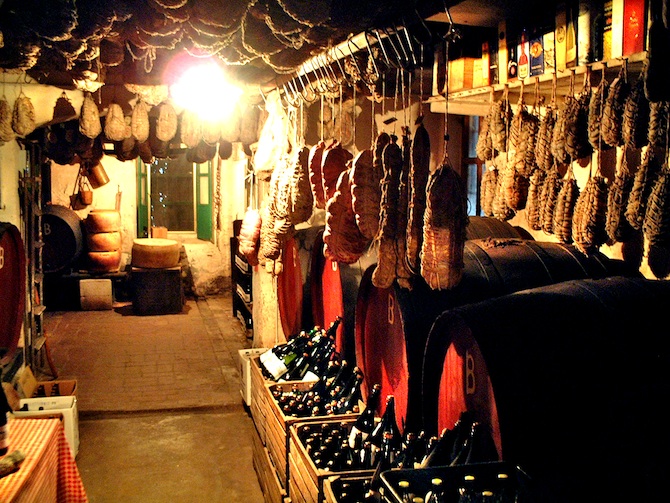
Fun fact: Emilia-Romagna is home to the first white wine to ever receive DOCG status, called Albana di Romagna. That being said, an ever more popular wine is Lambrusco, a red wine made from the namesake grape. While you’ll feel some fizz it’s not exactly a sparkling wine, and can be made dry or slightly sweet; fruity, earthy and/or spicy. Essentially, you’ll get a lot of variety with this wine.
Umbria makes a delicious dry white wine of note called Orvieto. Produced from trebbiano, verdello, grechetto, drupeggio and malvasia, it’s crisp and easy drinking — and even better when you get an Orvieto Classico. Note: While rare, at times this wine is also made into a stunning sweet variety. If you like red, two DOCG wines to try include Torgiano Rosso Riserva and Sagrantino di Montefalco. These two wines are very different. While Torgiano Rosso Riserva are more delicate, Sagrantino di Montefalco is quite powerful, made both dry and sweet.
In Abruzzi you won’t find anything too stunning; that is, aside for their Montepulciano d’Abruzzi. While not Italy’s most complex wine, it’s an easy drinking wine that pairs well with food and is much more affordable than many of the other choices around the country. Note: This is also another example of how Italian wines can sometimes be confusing when grapes and towns have the same names but different meanings. As stated above, Montepulciano is also a place, although with Montepulciano d’Abruzzi we are referring to the Montepulciano grape and Abruzzi as the place.
Head to the southern peninsula to the regions of Campania, Apulia, Basilicata and Calabria and you’ll probably notice a drop in quality. That being said, there are some great producers. For example, one famous red wine you’ll find in the south — and the only wine in these regions with the DOCG title — is Taurasi made from aglianico grapes. The red wine offers essences of chocolate, animal and tar, with volcanic soil imparting a smokiness.
And in Sicily, you’ll be in sweet wine heaven. Italy’s largest region, Sicily has a very warm Mediterranean climate that allows for concentrated sugar in the grapes. The region’s most famous wine is Marsala, a sweet fortified wine made from grillo and catarratto bianco with about 17-18% alcohol. This wine tastes of apricots, dates and dried fruit. Another sweet wine in Sicily to sample — or completely indulge in — is a Moscato di Pantelleria made from zibibbo (aka Muscat of Alexandria). And with the rare and sweet Malvasia delle Lipari, crafted from malvasia grapes, you’ll savor flavors of apricot, dried rose and white fig.
Personal recommendation: I recently visited a winery in Sicily for a wine lunch that I would love to recommend to you — everyone in our group purchased a bottle after the tasting. It’s called Preziosi Leggendari Moscati, and if you make a reservation you can have them prepare a delicious spread of foccacias, seafood risotto, cheeses, arancini, eggplant stuffed bread bowls, cannolis, cassata and more. They make an enticing selection of white, red and dessert wines, and their dessert Moscato di Siracusa DOC wine is a worth the trip. To make a reservation email [email protected].
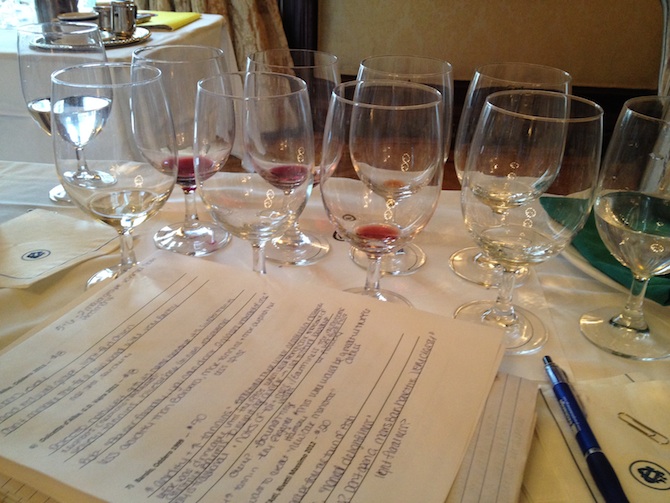
The Tasting
Unfortunately I missed one of the two Italy classes — oddly enough for a cruise to the Mediterranean (including Sicily) aboard the EUROPA 2, where wine is a major programming focus. This means I also missed one of the tastings; however, I was still able to sample eight noteworthy Italian wines. Note: For the “Other Regions Of Note” section I used Karen MacNeil’s “The Wine Bible” as well as my Sommelier Society of America sommelier certification course notes and my experience in Sicily to get my information.
The tasting began with a 2011 Ribolla Gialla, Dorigo, from Friuli-Venezia Giulia, Italy. The wine features the ancient ribolla gialla grape which is native to the region. This golden yellow wine offers floral and lemon on the nose, with a bright acidity and citrus on the palate. Mr. Eilers explains how this would go perfectly with salty appetizers and fried seafood, as the wine XYZ
Next we’re on to a 2011 Soave della Valpolicella, La Formica, crafted from the garganega grape, which has a knack for adapting and mimicking its environment. Looking at the wine the first thing I notice is its deep color. Once I have it swirling around my palate, I’m immediately drawn to the crisp, clean nature of the wine, with notes of lemon zest — a quality Soave is known for — and honey.
When the class started I’d noticed we’d be sampling an Amarone, and now we’re up to it: a 2006 Amarone Valpolicella Classico San Rustico. This wine is 16% alcohol — which Amarone is known for, as it’s a dry wine made from very concentrated grapes — with notes of chocolate, stewed fruits, dark berries and spices. It’s rich yet smooth, and honestly one of the best wines I’ve ever tasted.
A 2012 Gavi di Gavi, Le Mesma allows me to sample another famous Italian wine. This dry white wine has delicate straw yellow color, and striking notes of almonds, a quality synonymous with Gavi, as well as apricot, citrus and white flower. It’s very acidic, complementing the rich foods of Piedmont. As Mr. Eilers comments, “In Piedmont they cook with butter, not olive oil.”
A 2011 Barbera d’Alba, Oddero, high acid, fruit driven red wine that features on of Italy’s most quintessential grapes: Barbera. You’d never mistake this for a New World wine, as it’s very earthy with notes of sour cherry, plum and delightful spice.
A 2011 Dolcetto d’Alba, G.D. Vajra, allows me to sample one of Italy’s most easy-drinking wines. While the name may lead one to believe the wine is sweet, it’s not, although it’s sweeter than its neighborhood nebbiolo and barbera, which is where it gets its name from. This wine has less acidity than the previous Barbera, with more tannins and a purplish hue. As we sample, Sommelier Society of America chairman Bob Moody chimes in with his opinion on the wine and how it’s “abuser-friendly because you can easily drink two glasses instead of one.”
Our final wine before we get to dessert is a 1999 Barolo, Oddero, a welcomed treat. Featuring high acidity and high tannins, sometimes these wines need a decade before they’re drinkable. Mr. Eilers tells us how before the 1970s, winemakers used chestnut barrels; however, they switched to oak once they realized it would help the wine to age more quickly. Still, this wine is definitely not something you purchase and drink right away. As it’s been aged for 15 years, it’s delightfully complex, with notes of tar, roses, violets, wet forest floor and mushrooms. They key here is elegance and harmony, and this wine fits the bill. I can imagine this pairing perfectly with truffle dishes.
Finally, it’s time for the sweet wine, a 2012 Moscato d’Asti, Rivetti Massimo. Flavors of pound cakes and honey envelop my palate, and I completely agree with Mr. Eilers next suggestion, “When you have a sugar craving, don’t open a Mars Bar. Have this. It’s very classy.”
It is indeed.
This has been part of Sommelier Certification, an original Epicure & Culture series.
Have you ever taken a wine trip to Italy?
Jessica Festa
Latest posts by Jessica Festa (see all)
- A Culturally-Immersive Adventure In Mongolia’s Altai Mountains - Jul 8, 2023
- This Recipe Sharing Platform Supports Women In The Culinary Industry (Labneh Recipe Included!) - Nov 5, 2020
- Hiking The Mohare Danda Community Eco-Trek In Nepal - Jun 3, 2020
- 6 Important Questions For Choosing A Responsible Yoga Retreat - May 18, 2020
- How To Create & Grow A Profitable Blogging Business (Ethically) - Jan 18, 2020



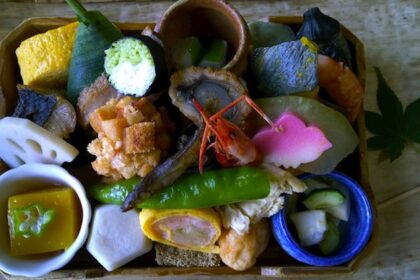

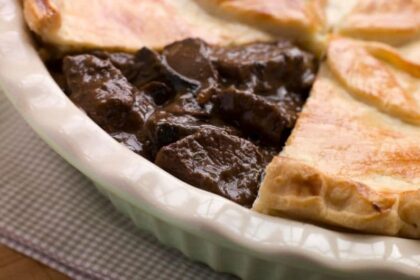
The Chianti Classico di Montemaggio is a Tuscan red wine produced from predominantly Sangiovese grapes and a small portion of Merlot. It is characterised by a brilliant ruby colour, intense but elegant bouquet, rich with floral aromas, hints of fruits and spices. It has a full body with intense flavour and lasting presence on the palate. A very versatile wine that contains all the quality of the land from which it is produced and brings your senses back in the past up till the Etruscan times.